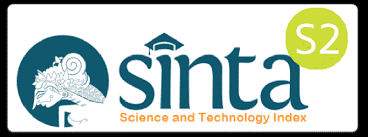IMPACT OF HYPEREMESIS GRAVIDARUM ON PREGNANCY OUTCOMES
DOI:
https://doi.org/10.35730/jk.v11i0.677Abstract
Introduction: Hyperemesis gravidarum (HEG) or continuous nausea and vomiting can result in loss or even death in the mother and fetus. For most women who recover from HEG well, there is clear evidence of an increased risk of pregnancy outcomes.
Purpose: The purpose of this scoping review is to map the evidence and conclude the literature about the effects of Hypermesis Gravidarum on pregnancy outcomes.
Methods: In this scoping review, we evaluate the emerging evidence that HEG impacts pregnancy outcomes, by using two databases (Pubmed and ScienceDirect).
Results: some of the effects of HCG, namely: LBW and Premature, Repetition of hyperemesis gravidarum across generations, Reduction of insulin sensitivity in children in childhood, Risk of placental abruption and increased risk of birth for small for gestational age (SGA), Provides a protective effect on the risk of cleft lip in new babies birth, Delayed nerve development in children, increased blood pressure and abnormal fetal brain development.
Conclusion: HEG has an adverse risk to the outcome of pregnancy and can have an impact on the fetus, childhood and adulthood.
References
ACOG. (2018). Clinical Management Guidelines for Obstetrician – Gynecologists, 2018(September 2015), 15–30.
Ayyavoo, A., Derraik, J. G. B., Hofman, P. L., Biggs, J., Bloomfield, F. H., Cormack, B. E., … Cutfield, W. S. (2013). Severe hyperemesis gravidarum is associated with reduced insulin sensitivity in the offspring in childhood. Journal of Clinical Endocrinology and Metabolism, 98(8), 3263–3268. https://doi.org/10.1210/jc.2013-2043
Bolin, M., Åkerud, H., Cnattingius, S., Stephansson, O., & Wikström, A. K. (2013). Hyperemesis gravidarum and risks of placental dysfunction disorders: A population-based cohort study. BJOG: An International Journal of Obstetrics and Gynaecology, 120(5), 541–547. https://doi.org/10.1111/1471-0528.12132
Czeizel, A. E., Sárközi, A., & Wyszynski, D. F. (2003). Protective effect of hyperemesis gravidarum for nonsyndromic oral clefts. Obstetrics and Gynecology, 101(4), 737–744. https://doi.org/10.1016/S0029-7844(02)03125-3.
Dinkes DIY, 2017.
Dodds., L, Fell., D., B, K. S. Joseph, Allen., V., N, and B. B. (2006). Outcomes of Pregnancies Complicated by Hyperemesis Gravidarum. Journal. Bowman Gray School of Medicine, 107(4), 170–180.
Einarson, TR., Piwko, C., & Koren, G., (2013). Quantifying the global rates of nausea and vomiting of pregnancy: a meta analysis. J Popul Ther Clin Pharmacol. 2013;20(2):e71-83.
Fejzo, Q. M. S., Magtira, A., Paik, F., Macgibbon, K., & Mullin, P. M. (2015). European Journal of Obstetrics & Gynecology and Reproductive Biology Neurodevelopmental delay in children exposed in utero to hyperemesis gravidarum. European Journal of Obstetrics and Gynecology, 1–6. https://doi.org/10.1016/j.ejogrb.2015.03.028
Grooten, I. J., Painter, R. C., Pontesilli, M., Van Der Post, J. A. M., Mol, B. W. J., Van Eijsden, M., … Roseboom, T. J. (2015). Weight loss in pregnancy and cardiometabolic profile in childhood: Findings from a longitudinal birth cohort. BJOG: An International Journal of Obstetrics and Gynaecology, 122(12), 1664–1673. https://doi.org/10.1111/1471-0528.13042
Koot, M. H., Grooten, I. J., Sebert, S., Koiranen, M., Järvelin, M. R., Kajantie, E., … Roseboom, T. J. (2017). Hyperemesis gravidarum and cardiometabolic risk factors in adolescents: a follow-up of the Northern Finland Birth Cohort 1986. BJOG: An International Journal of Obstetrics and Gynaecology, 124(7), 1107–1114. https://doi.org/10.1111/1471-0528.14534
Koren, G., Ornoy, A., & Berkovitch, M. (2018). Hyperemesis gravidarum — Is it a cause of abnormal fetal brain development ? Reproductive Toxicology, 79(January), 84–88. https://doi.org/10.1016/j.reprotox.2018.06.008
Matsuo K, Ushioda N, Nagamatsu M, Kimura T: Hyperemesis Gravidarum in Eastern Asian Population. Gynecol Obstet Invest 2007;64:213-216. doi: 10.1159/000106493
Mcparlin, C., Donnell, A. O., Robson, S. C., Beyer, F., Moloney, E., Bryant, A., … Vale, L. (2016). Treatments for Hyperemesis Gravidarum and Nausea and Vomiting in Pregnancy A Systematic Review, 316(13), 1392–1401. https://doi.org/10.1001/jama.2016.14337
Ng, Q. X., Venkatanarayanan, N., Lee, M., Qing, Z., Yih, C., Ho, X., & Mo, Y. (2017). A meta- analysis of the association between Helicobacter pylori ( H . pylori ) infection and hyperemesis gravidarum. File:///Users/Mutiarasolechah/Downloads/Nausea and Vomiting of Pregnancy/Jafari-Dehkordi2017.Pdf, 1–11. https://doi.org/10.1111/hel.12455
RN, A. E., Caroline Maltepe Rada Boskovic, Koren, & Gideon. (2007). Motherisk Update, 53, 2109–2111.
Simsek, G., & Bayar, N. (2014). Marked changes in olfactory perception during early pregnancy : a prospective case – control study, 1–4. https://doi.org/10.1007/s00405-014-3147-7
Vandraas, K. F., Vikanes, Å. V, Støer, N. C., Vangen, S., Magnus, P., & Grjibovski, A. M. (2013). Is hyperemesis gravidarum associated with placental weight and the placental weight-to-birth weight ratio ? A population-based Norwegian cohort study. Placenta, 34(11), 990–994. https://doi.org/10.1016/j.placenta.2013.08.001
Vikanes, Å., Skjærven, R., Grjibovski, A. M., Gunnes, N., Vangen, S., & Magnus, P. (2010). Recurrence of hyperemesis gravidarum across generations: Population based cohort study. BMJ (Online), 340(7755), 1071. https://doi.org/10.1136/bmj.c2050
Wibowo, N., Purwosunu, Y., Sekizawa, A., & Farina, A. (2012). International Journal of Gynecology and Obstetrics Vitamin B 6 supplementation in pregnant women with nausea and vomiting. International Journal of Gynecology and Obstetrics, 116(3), 206–210. https://doi.org/10.1016/j.ijgo.2011.09.030




